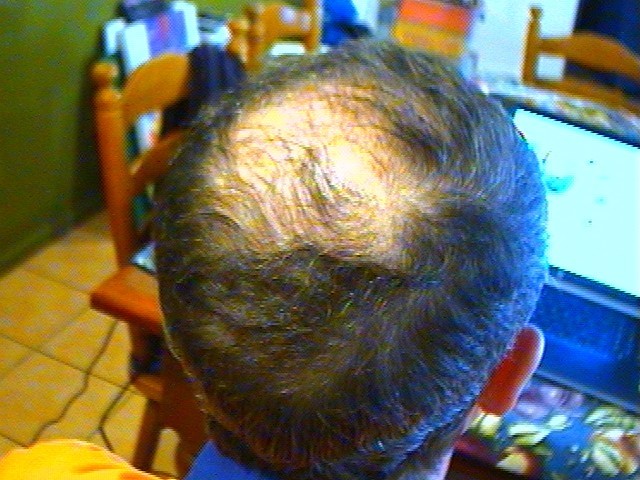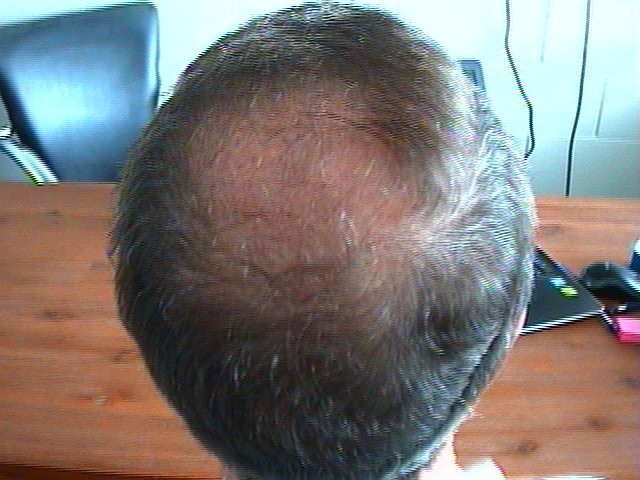Are you losing hair each day?
Is your part area becoming thinner?
Is your hairline receding?
Is your ponytail thinner than before?
The cause can be from a wide range of things, including underlying health issues. As a Certified Trichologist, Liz will look at the symptoms, combined with family and medical history to determine what may be the cause or causes, and then develop an individual treatment plan.
What does a Trichologist do?
A trichologist helps people who have problems with their hair or scalp.
The client may complain of sudden excessive hair loss from all over the scalp, a bald patch which has suddenly appeared, or itching and excessive scaling of the scalp.
These are the sorts of problems a trichologist sees. The trichologist will carefully question each new client and examine the scalp thoroughly to assess the problem and its cause.
The trichologist must then decide if treatment is necessary and whether the problem is within his or her realm to treat, or should be dealt with by another specialist. Treatment by the trichologist might consist of the application of a particular cream or lotion to the scalp or the use of nutritional therapy.
What happens during the Consultation?
During the initial consultation, Liz will use her knowledge and experience of trichology to establish the nature of the problem. The hair is a very sensitive ‘barometer’ of imbalances in the body; factors such as poor nutrition, systemic problems, medications and stress can affect the hair and skin. Liz identifies the cause of the problem and, where possible, treats it.
As part of diagnosis, Liz may analyse the hair microscopically or have it analysed for its mineral levels, or suggest blood tests be run.
Microscopic analysis of the hair is used to:
Assess structural damage
Establish the rate of hair loss
Determine the severity of hair loss
Confirm the presence of lice and fungus
Identify genetic problems
What happens after the issue has been diagnosed?
If there are no underlying health issues, Liz will develop a treatment plan to resolve the issue at hand. A total approach to hair care is taken, from your general day-to-day hair care needs, to the treatment of any hair and scalp issues. Liz offers a friendly, discreet, and personal service, where treatments are dependent on the individual and their specific needs.
In some cases, Liz may request you have particular tests done under the supervision of your GP, or may even call on the experience of a dermatologist or endocrinologist to help identify or resolve the problem.
What hair and scalp issues can Liz help me with?
Hair fall, hair breakage, hair thinning, and miniaturisation of hairs
Hair loss, baldness, alopecia
Psoriasis, sebroic dermatitis
Dryness and oiliness of hair or scalp
Other conditions that Liz will look for include Tinea Capitis, Pediculosis Capitis, Loose Anagen Syndrome, Hair Casts, Trichorrhexix Nodosa, Pili Torti, Monilethrix. Pili Annulati, Trichoptilosis, Bubble Hair, Fragilitas Crinium, Trichonodosis, TrichonorrhexisInvaginata, Pahl-pinkus Constrictions, Trichothiodstrophy, Menkes’ kinky hair syndrome, Plica Polonica, Lichan Planopilaris, Discoid Lupus Erythematosus, Foculitis Decalvans, Pseudopelade.
Are you experiencing hair loss? Have your eyebrows disappeared?
Hair loss is one of the most common problems that a Trichologist will see.
Healthy hair and scalp
What inflammation looks like up close
There are many different types of hair loss such as:
Diffuse Hair Loss
Diffuse hair loss can be divide into “temporary self-correcting diffuse hair loss’ and’ permanent diffuse hair loss until the cause is corrected’. Hair loss usually happens 3 months after the cause has taken place, with another 3 months before it corrects itself.
Alopecia Areata
Image courtesy of the International Association of Trichologists
This is an auto immune condition in which the immune privilege of the hair collapses. It can be triggered by a numerous number of factors. First signs are patches of baldness, circular in shape.
Androgenetic Alopecia (Male Patterned Baldness)
Myths regarding MPB such as poor circulation, tight scalp, blocking of hair follicles etc. are all just myths.
Inflammation/swelling around the hair follicle indicates that one group of white blood cells is attacking the stem cell of the hair follicle.
Dihydrotestosterone or DHT attacks the hair follicle and causes them to shrink over time, which causes the hair to become thinner and thinner until some men become totally bald on the top of their head.
This can be easily seen with a scope at a magnification of about 50. If you have concerns, please make an appointment so that I can have a look, and in doing so we can have a look at options as how best to treat it.
Androgenetic Alopecia (Female Patterned Baldness)
Female patterned hair loss (FPHL) – here in the growing phase, many of the hairs in the areas become shorter, producing finer hairs. This can begin as early as your 20’s, but usually more noticeable in your 40’s and even more so after menopause. It is usually found in the front and top areas of your scalp. The first noticeable signs are part becoming wider or ponytail becomes less dense.
There are a lot of triggers involved that can start this process, every case will be on an individual basis.
If you do notice changes please give feel free to make an appointment so we can have a chat about your concerns with the aid of my scope and work out the best way moving forwards to put you on the path to healthier thicker, stronger hair.
Frontal Fibrosing Alopecia
Frontal fibrosing alopecia is an auto immune scarring alopecia which generally occurs along the frontal hair line and around the ears in post-menopausal women. Eye-brows are often affected too.
Image courtesy of the International Association of Trichologists
Trichotillomania
Trichotillomania is a problem where people pull out their own hair. It can lead to irregular bald patches.
Other Hair Loss Conditions
Folliculitis Decalvans
Discoid Lupus Erythematosus
Psudopelade
Lichen Planopilaris
Do you have an itchy or oily scalp?
Itching scalp, scaling and excessive oiliness are all symptoms seen by a Trichologist. Some of the various conditions include:
Example of healthy hair and scalp
Example of a scalp condition with inflammation
Dandruff
A non-inflammatory condition, scaling of the scalp. Cells of the epidermis are moving up at an abnormally high rate. If you have concerns, we do have treatments available and tips that may help
Psoriasis
An auto-immune condition in which again the cell in the epidermis are moving up at an abnormally high rate. The goal with psoriasis is to control the condition, unfortunately, no therapy will cure it but there are ways to maintain it.
Seborrheic Dermatitis
This is similar to dandruff but characterised by greasy yellowish scales. Hairline and postauricular areas are most often involved. Eyebrows, nasolabial folds and sternum can also be affected.
Tinea Capitis (Ringworm)
Needs to be treated by a doctor, as it is contagious.
Other Under Scalp Conditions
Contact Dermatitis
Lichen Simplex
Pityriasis Amiantecea (thick crusty scale)
Does your hair break easily? Do you see a lot of hair in the shower drain?
There are numerous hair shaft problems that may be due to chemical or mechanical damage. They may be hereditary or may be due to poor strength of connective tissue. Some of these conditions include:
Loose Anagen Syndrome
Loose anagen syndrome is where hair is falling easily from the scalp. To get a good diagnosis of this condition we need to look art the hair follicle under a microscope. It is cause because the hair is not being held firmly in the follicle by the inner root sheath.
Hair Shaft Problems
Chemical and mechanical damage
Fungal infection around the hair shaft
Monillethrix (beaded hair)
Pili Annulati (ringed hair)
Trichotillomania
Trichorrhexis Nodosa
Pili Torti (twisted hair)
Pediculosis Capitis
















